In 2016, scientists discovered 18,000 new species. Now meet the Top 10
- Share via
Life on Earth is relentlessly diverse, and every year brings thousands of new examples.
In 2016, science described around 18,000 new plant and animal species. Some resemble figures from popular culture, others a nightmare come to life. Some were found lurking underground or beneath the sea, while many had been hiding in plain sight all along.
Each year, the SUNY College of Environmental Science and Forestry and an international panel of taxonomists compile a list of their Top 10 new species. (Read the 2016 list here.)
Since the list’s inaugural year in 2008, more than 200,000 species have been discovered and named.
“This would be nothing but good news were it not for the biodiversity crisis,” Quentin Wheeler, the college’s president and founding director of the International Institute for Species Exploration, said in a statement. “We’re actually losing species faster than we’re describing and naming them for the first time in history.”
Wheeler said the rate of extinction today is 1,000 times faster than in prehistory, with climate change likely accelerating the trend.
“We can engineer our way through a lot of inconveniences of climate change, but only hundreds of millions of years will make it possible to repopulate the planet with biodiversity,” Wheeler said.
Here’s the full list:
The Sorting Hat spider
Eriovixia gryffindor
Location: India
Only a tenth of an inch long, this tiny spider is camouflaged to resemble the dead and dry leaves in which it hides during the day. The arachnid’s cone-shaped body, which comes to a bent, pointy end, reminded its human discoverers of the magical Sorting Hat from the “Harry Potter” books.
The scientists named the spider for Godric Gryffindor, the Sorting Hat’s original owner, as “an ode … for magic lost, and found, in an effort to draw attention to the fascinating, but oft overlooked world of invertebrates, and their secret lives,” they write in the Indian Journal of Arachnology.
Only one specimen of E. gryffindor, a female, has been found. The spider weaves a vertical, orb-shaped web by night in the forests of central Western Ghats, India.
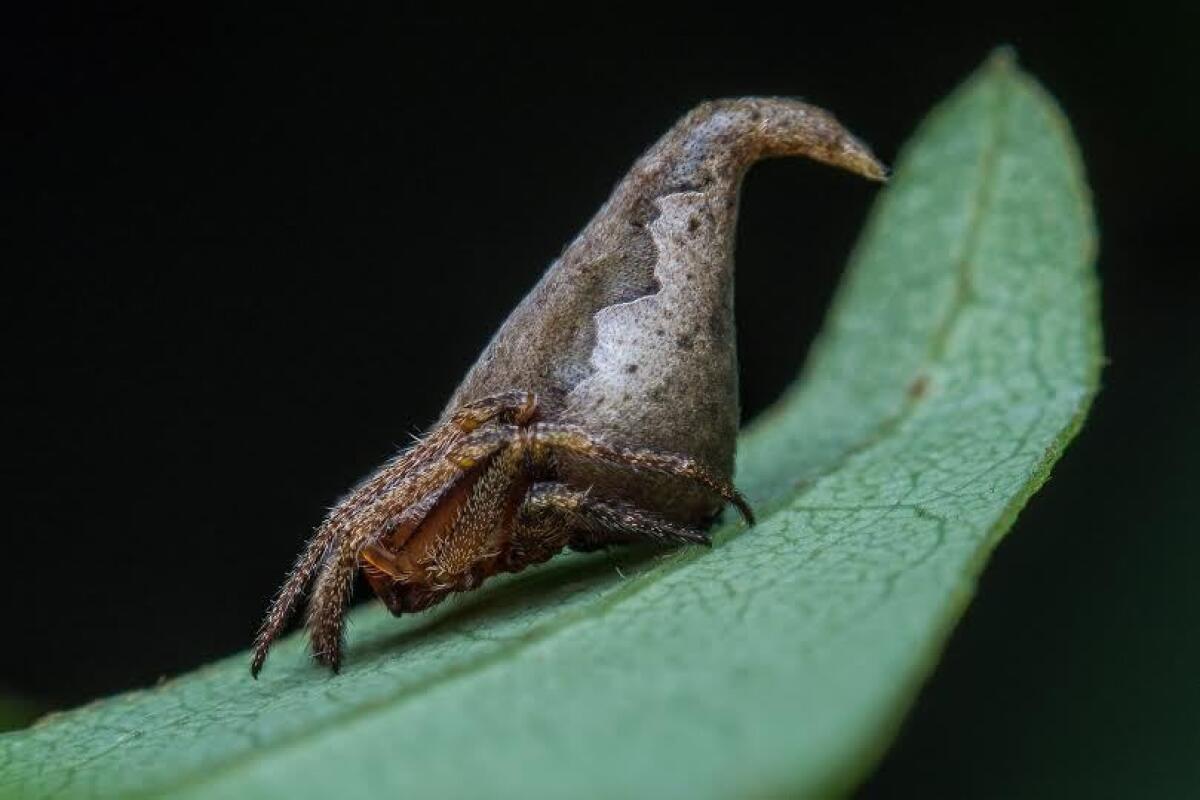
The leaf … no, wait ... the katydid
Eulophophyllum kirki
Location: Malaysia
Can you spot the insect in the photo below?
This katydid mimics its surroundings with its leaf-like body and hind legs. Females of the species are bright pink; males are all green. The insect was named for Peter Kirk, who photographed the only known specimen.
E. kirki was discovered by researchers who were looking for snakes and tarantulas in Borneo. Because it was found in a protected area, the scientists could not collect specimens.

The root-eating island rat
Gracilimus radix
Location: Indonesia
All the other members of the Sulawesi root rat’s family are strict carnivores, but this critter eats both meat and plants. It is most closely related to another rat found on Sulawesi Island in Indonesia, the water rat.
G. radix is known — and so named — for its taste for roots. The slender, gray-brown rat has rounded ears and an almost-hairless tail.
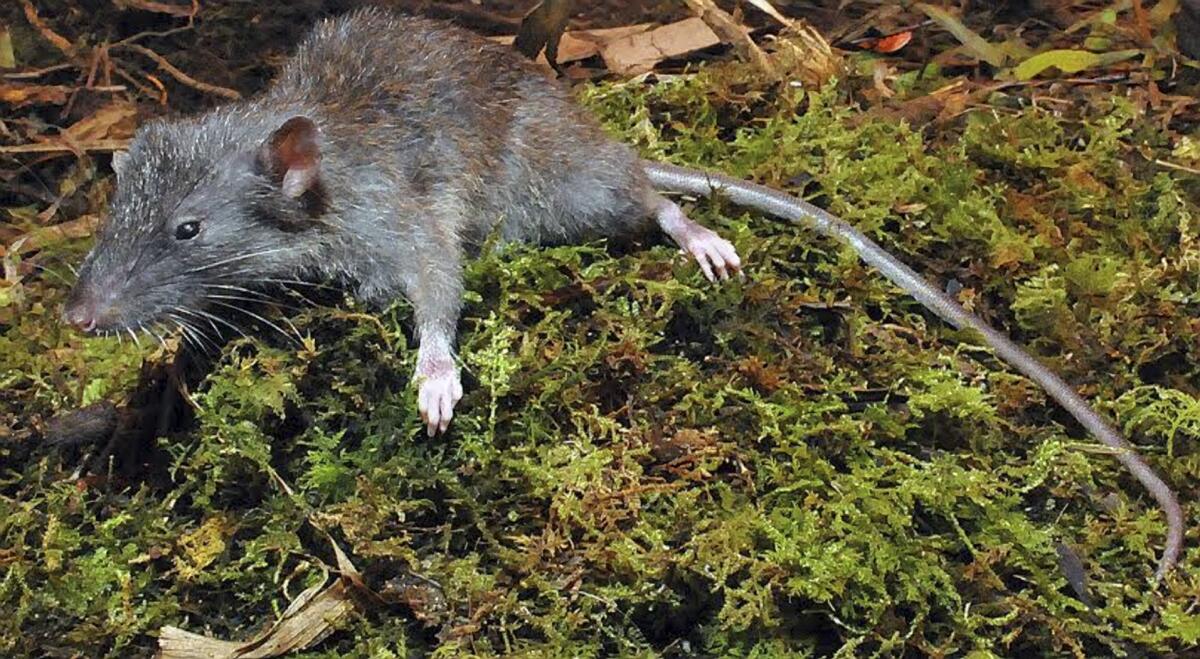
The millipede with 414 legs, 200 poison glands and zero eyes
Illacme tobini
Location: California
Discovered in a cave in Sequoia National Park, this eyeless millipede stands out for an anatomy that’s just plain weird.
The inch-long millipede has 414 legs, but as it ages, it gains more body segments and thus more legs. It lives in tiny cracks in the soil, where it probably feeds on liquids using its mysteriously shaped mouth. Males have four legs modified into penises.
The species also secretes silk from its hairs and has 200 nozzle-like poison glands.
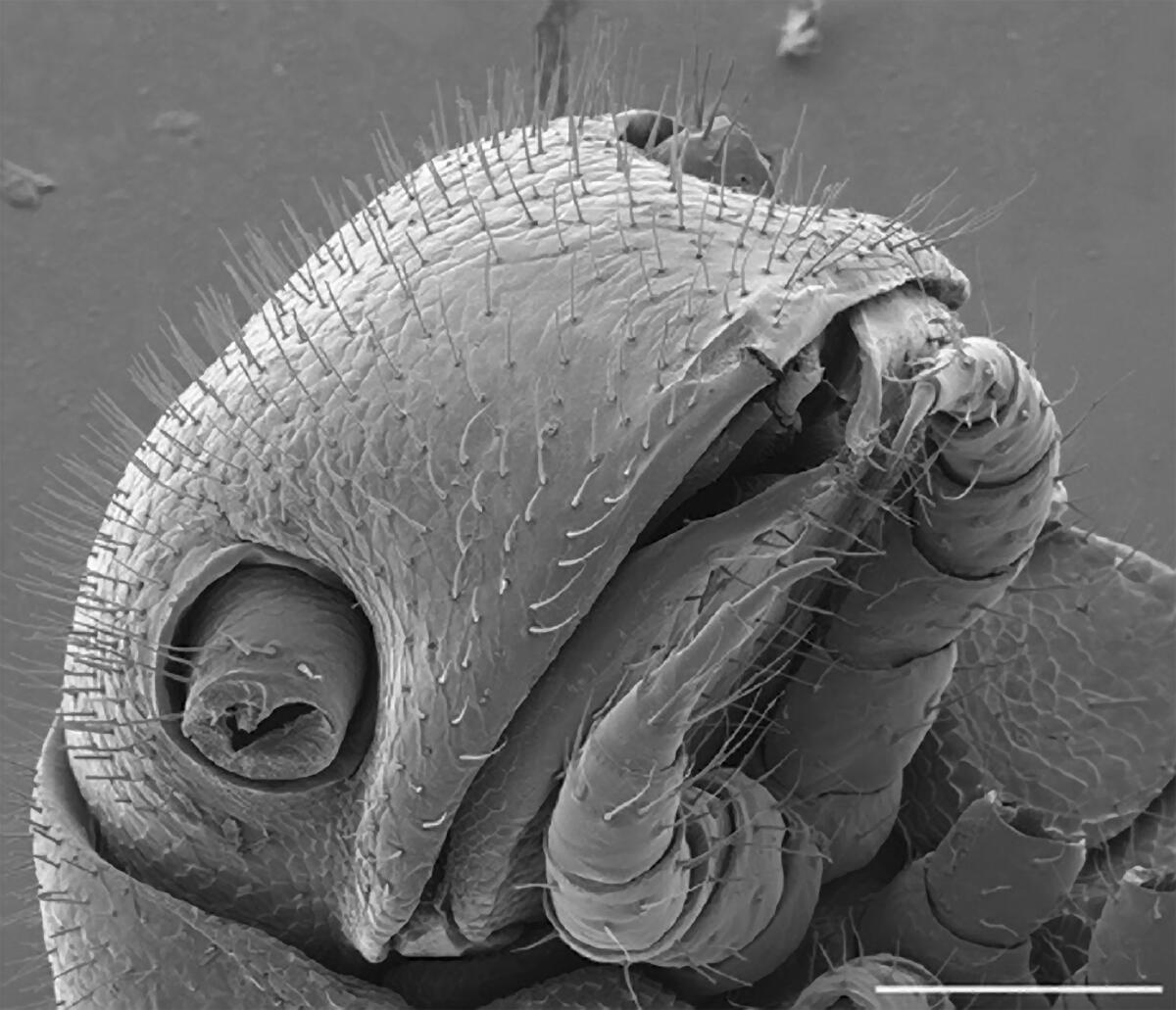

The spiny ant
Pheidole drogon
Location: Papua New Guinea
With the spiny backs of a dragon, these ants reminded researchers of Drogon, the black dragon from George R. R. Martin’s “Game of Thrones” novel “A Song of Ice and Fire.”
The soldier ants, such as the one pictured below, use their extra-large heads and jaws to crush seeds. Some of their spines are useful for anchoring the large muscle required to operate such a big head. Previously, scientists thought back spines were just used for defense.

The king of all freshwater stingrays
Potamotrygon rex
Location: Brazil
With its grand yellow and orange spots and hefty size, this freshwater stingray could be nothing less than royalty.
P. rex, the king of the freshwater stingrays, is 43 inches long and can weigh up to 44 pounds. The stingray joins the list of 350 fish known to inhabit the Tocantins River in Brazil. Remarkably, 35% of these fish are found nowhere else on Earth.
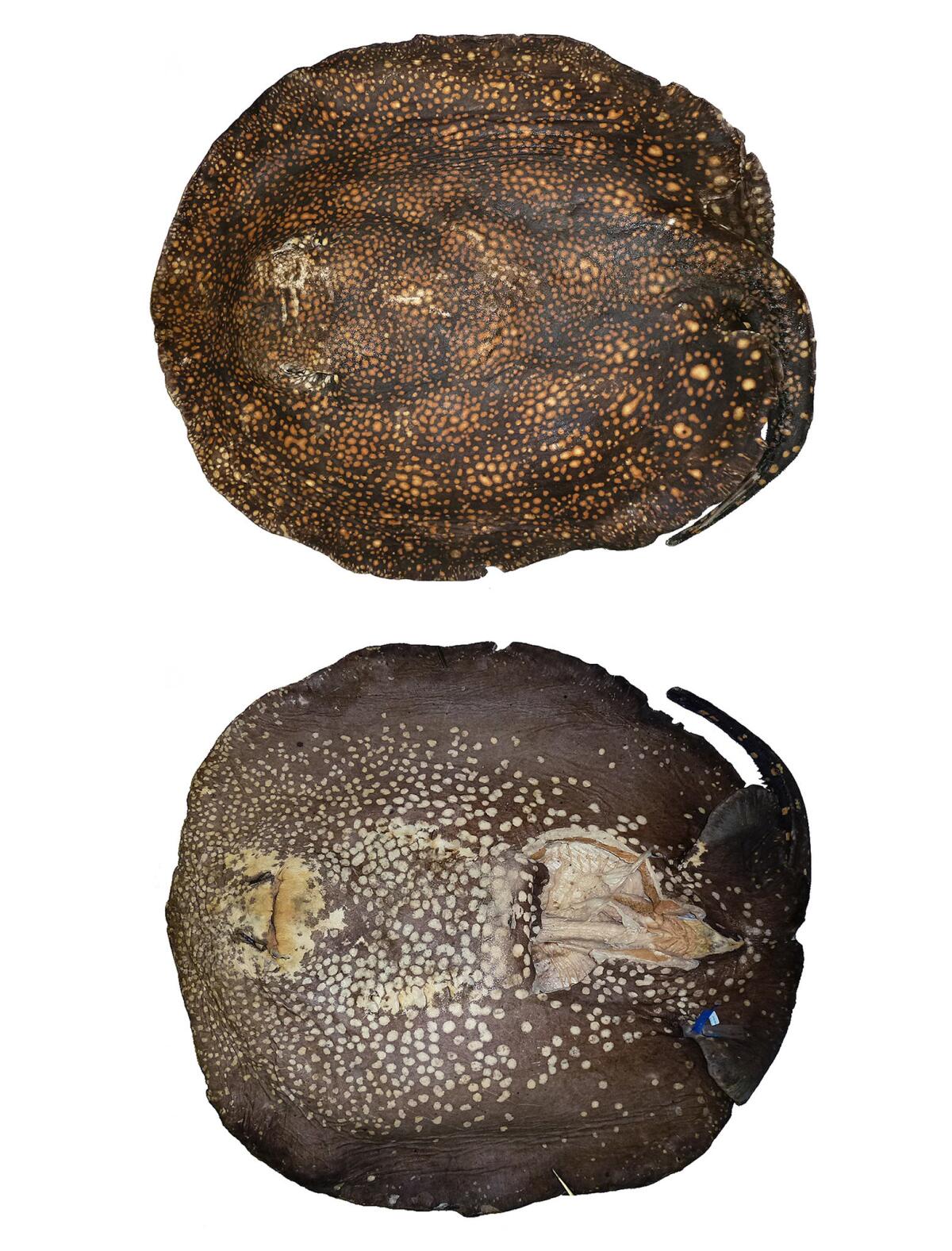
The first swimming centipede
Scolopendra cataracta
Location: Laos, Thailand and Vietnam
When an entomologist first observed this centipede under a rock, it escaped and dove to the bottom of a nearby stream, where it began to run underwater. Researchers would later note the insect’s unprecedented “amphibious habits”; it’s the first centipede equally adept at swimming and running.
S. cataracta has 20 pairs of legs and can grow to about 8 inches long. Scientists are concerned the species could lose habitat to development, mainly for tourism, along the rivers and streams.
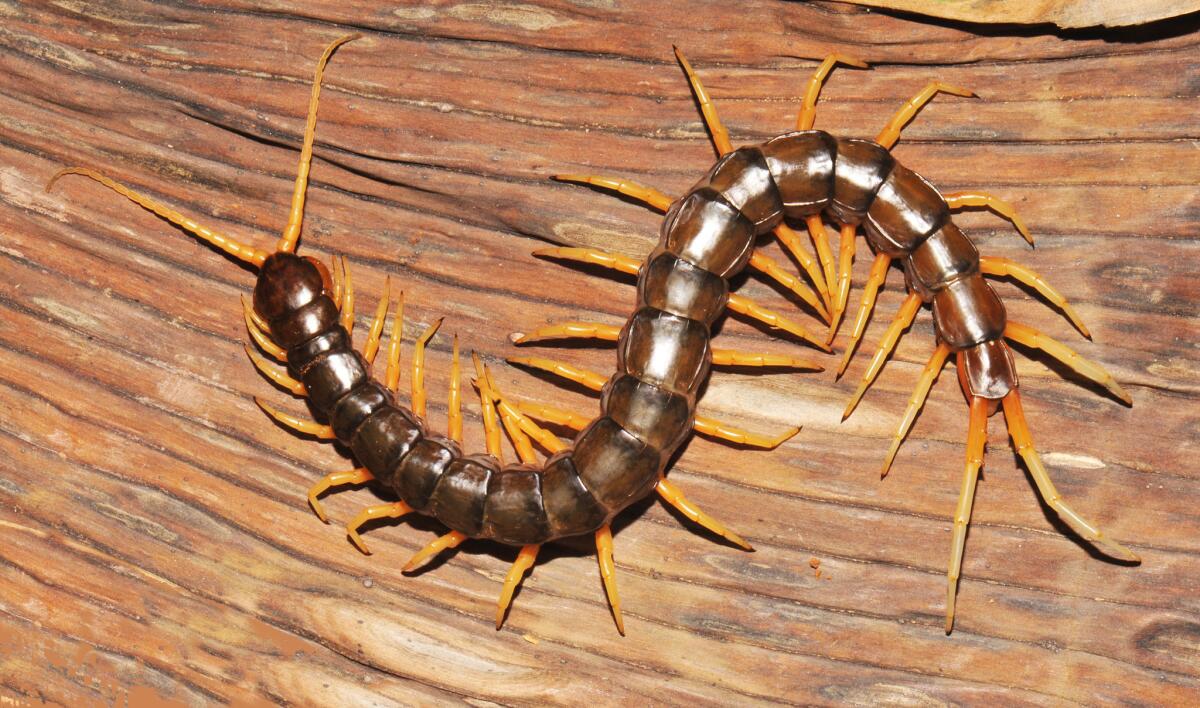
A bush tomato that ‘bleeds’
Solanum ossicruentum
Location: Australia
When you cut open the bush tomato, the fruit’s green flesh turns blood red as it oxidizes. If left to grow on its shrub, bush tomatoes — which are actually berries — mature into hard, leathery pods surrounded by a in spike-covered husk.
The bush tomato was named by 150 seventh-graders in Lewisburg, Penn. They combined the Latin “ossi” for bone and “cruentum” for bloody.

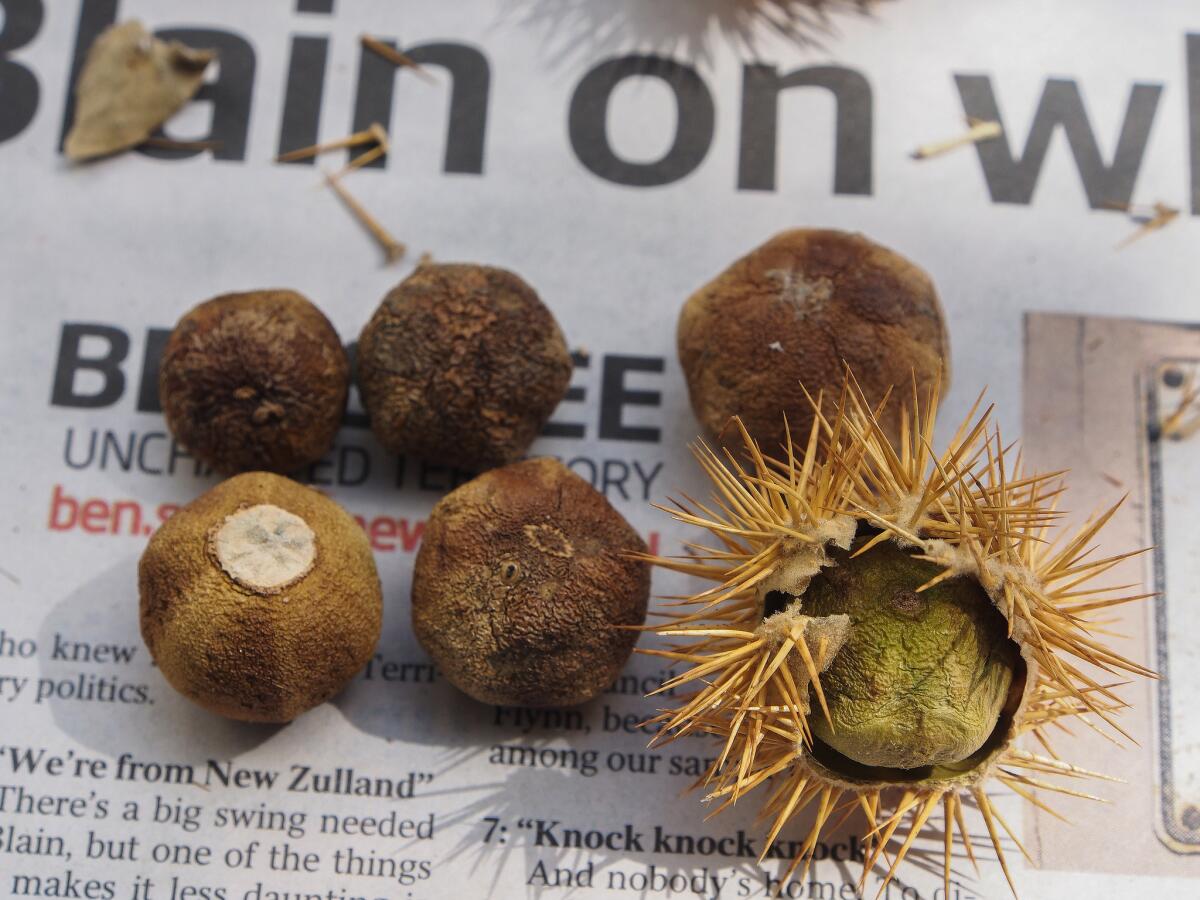
The diabolical orchid
Telipogon diabolicus
Location: Colombia
This critically endangered orchid bears a ghoulish resemblance to the devil. The flower’s male and female organs — called the gynostemium — are fused together in a way that forms a set of devilish horns, red eyes and perhaps even a goatee.
In the mountain forest of Colombia, the orchid harmlessly grows off of another plant. Its only known habitat is threatened by the reconstruction of a nearby road.
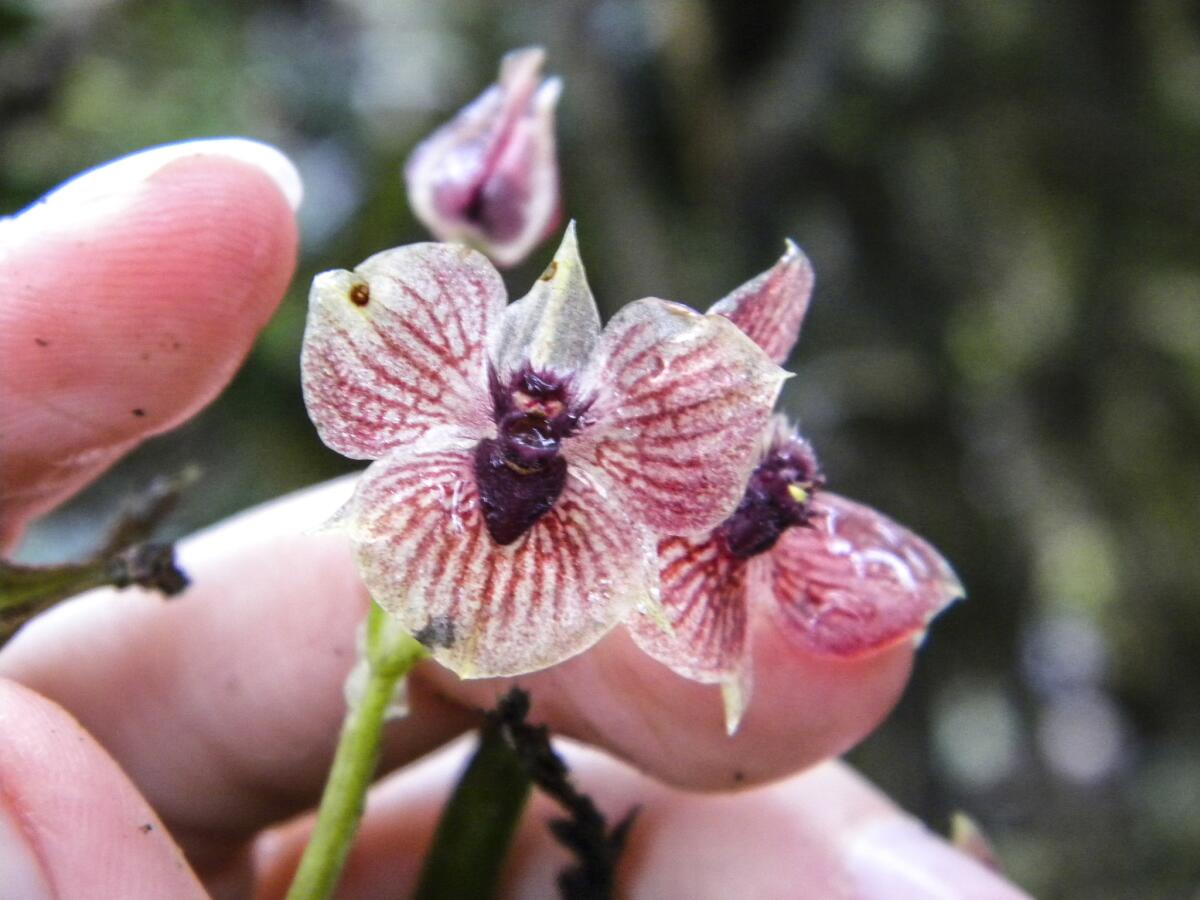
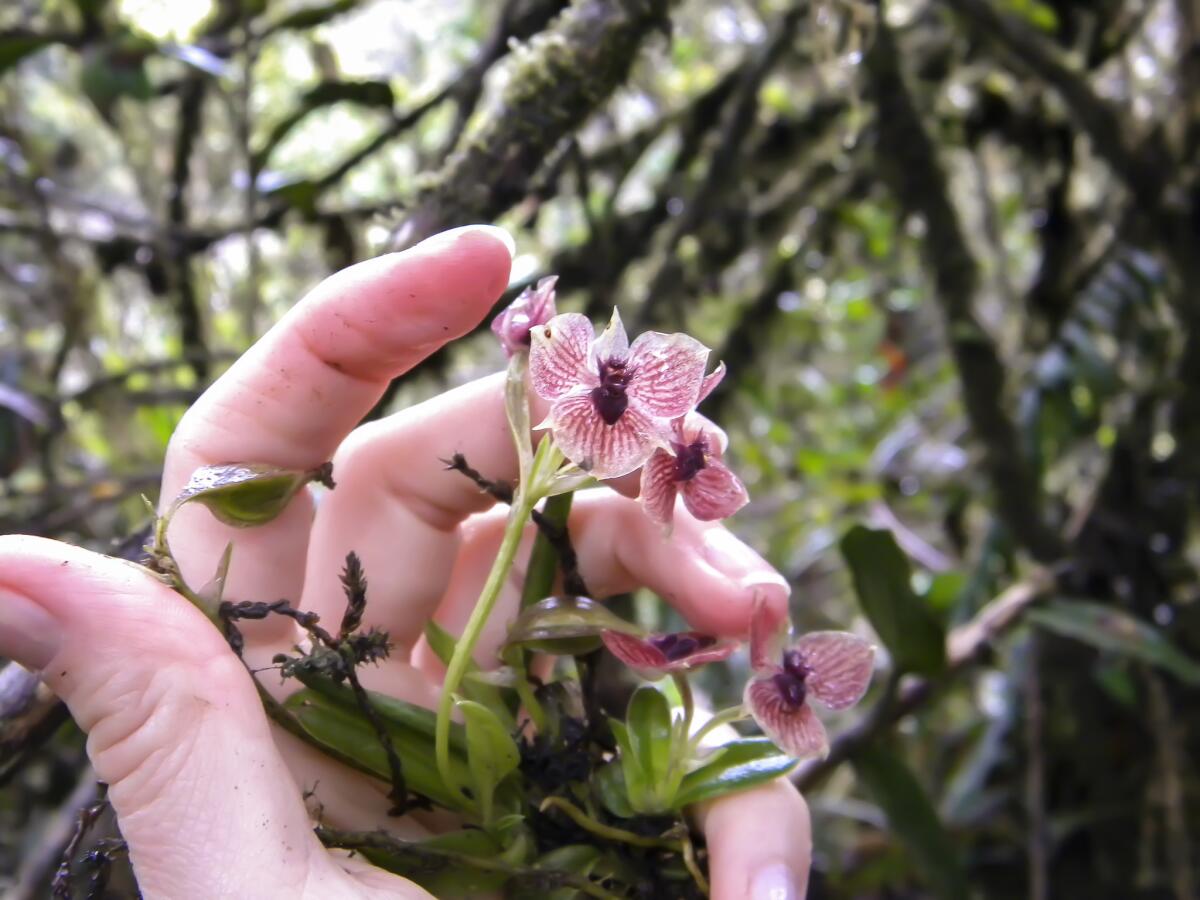
Churro: A deliciously named discovery
Xenoturbella churro
Location: Gulf of California, Mexico
The ocean depths are home to many strange creatures, including the deep-sea “churro.”
Researchers at the Monterey Bay Aquarium Research Institute and the Scripps Institution of Oceanography found X. churro and three other ocean worm species on an ROV dive 3,600 feet below the surface of the Gulf of California. At first, the explorers jokingly called the critters “purple socks.”
These primitive ocean worms have deep furrows running lengthwise along their 4-inch bodies, just like the fried-dough treat for which they are named. They have no brains, eyes, stomachs or anuses, but they do have mouths to eat clams and other mollusks.
MORE IN SCIENCE
Southern California, this is your chance to see some of the most 'extreme' mammals that ever lived
Rising sea levels could mean twice as much flood risk in Los Angeles and other coastal cities




